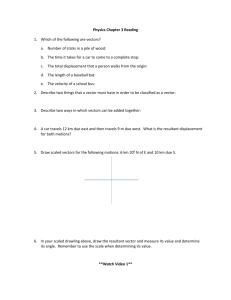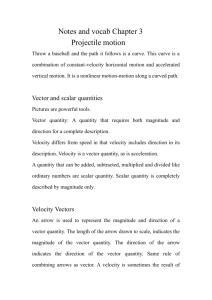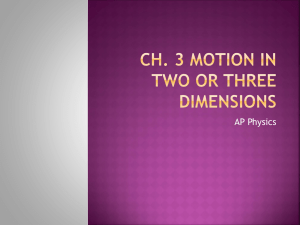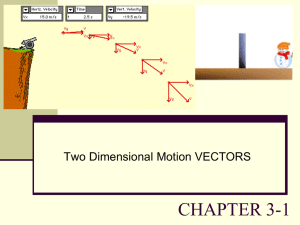Vector / Projectile Test Review
advertisement
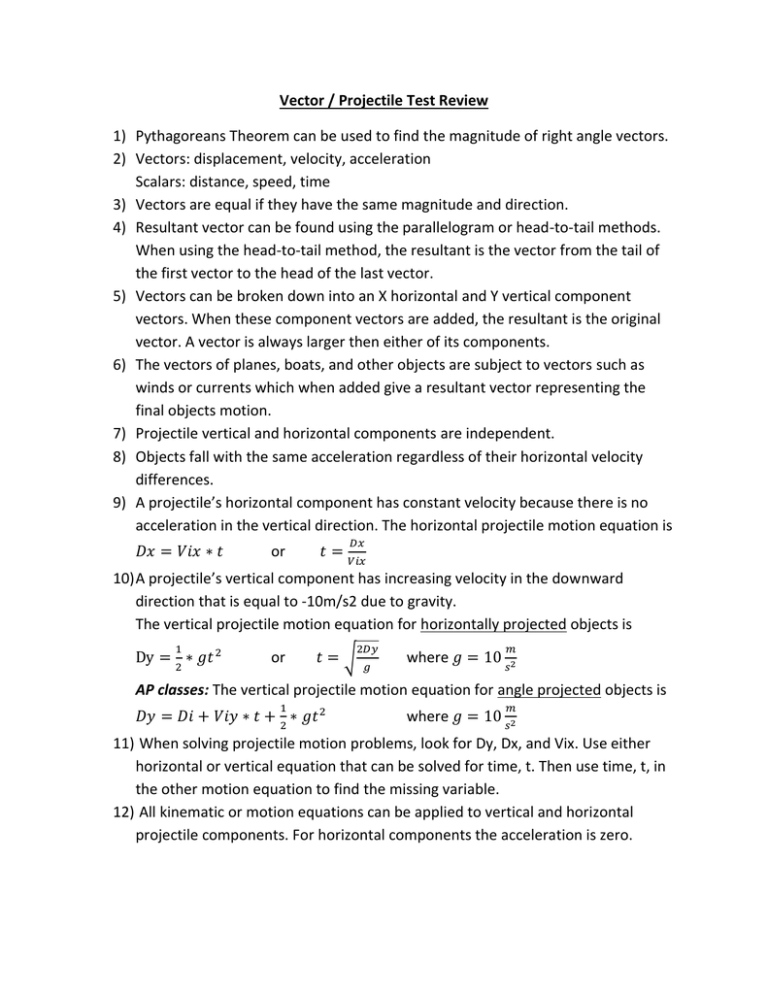
Vector / Projectile Test Review 1) Pythagoreans Theorem can be used to find the magnitude of right angle vectors. 2) Vectors: displacement, velocity, acceleration Scalars: distance, speed, time 3) Vectors are equal if they have the same magnitude and direction. 4) Resultant vector can be found using the parallelogram or head-to-tail methods. When using the head-to-tail method, the resultant is the vector from the tail of the first vector to the head of the last vector. 5) Vectors can be broken down into an X horizontal and Y vertical component vectors. When these component vectors are added, the resultant is the original vector. A vector is always larger then either of its components. 6) The vectors of planes, boats, and other objects are subject to vectors such as winds or currents which when added give a resultant vector representing the final objects motion. 7) Projectile vertical and horizontal components are independent. 8) Objects fall with the same acceleration regardless of their horizontal velocity differences. 9) A projectile’s horizontal component has constant velocity because there is no acceleration in the vertical direction. The horizontal projectile motion equation is 𝐷𝑥 = 𝑉𝑖𝑥 ∗ 𝑡 or 𝑡= 𝐷𝑥 𝑉𝑖𝑥 10) A projectile’s vertical component has increasing velocity in the downward direction that is equal to -10m/s2 due to gravity. The vertical projectile motion equation for horizontally projected objects is 1 Dy = ∗ 𝑔𝑡 2 2 or 2𝐷𝑦 𝑡=√ 𝑔 where 𝑔 = 10 𝑚 𝑠2 AP classes: The vertical projectile motion equation for angle projected objects is 1 𝐷𝑦 = 𝐷𝑖 + 𝑉𝑖𝑦 ∗ 𝑡 + ∗ 𝑔𝑡 2 2 where 𝑔 = 10 𝑚 𝑠2 11) When solving projectile motion problems, look for Dy, Dx, and Vix. Use either horizontal or vertical equation that can be solved for time, t. Then use time, t, in the other motion equation to find the missing variable. 12) All kinematic or motion equations can be applied to vertical and horizontal projectile components. For horizontal components the acceleration is zero.


